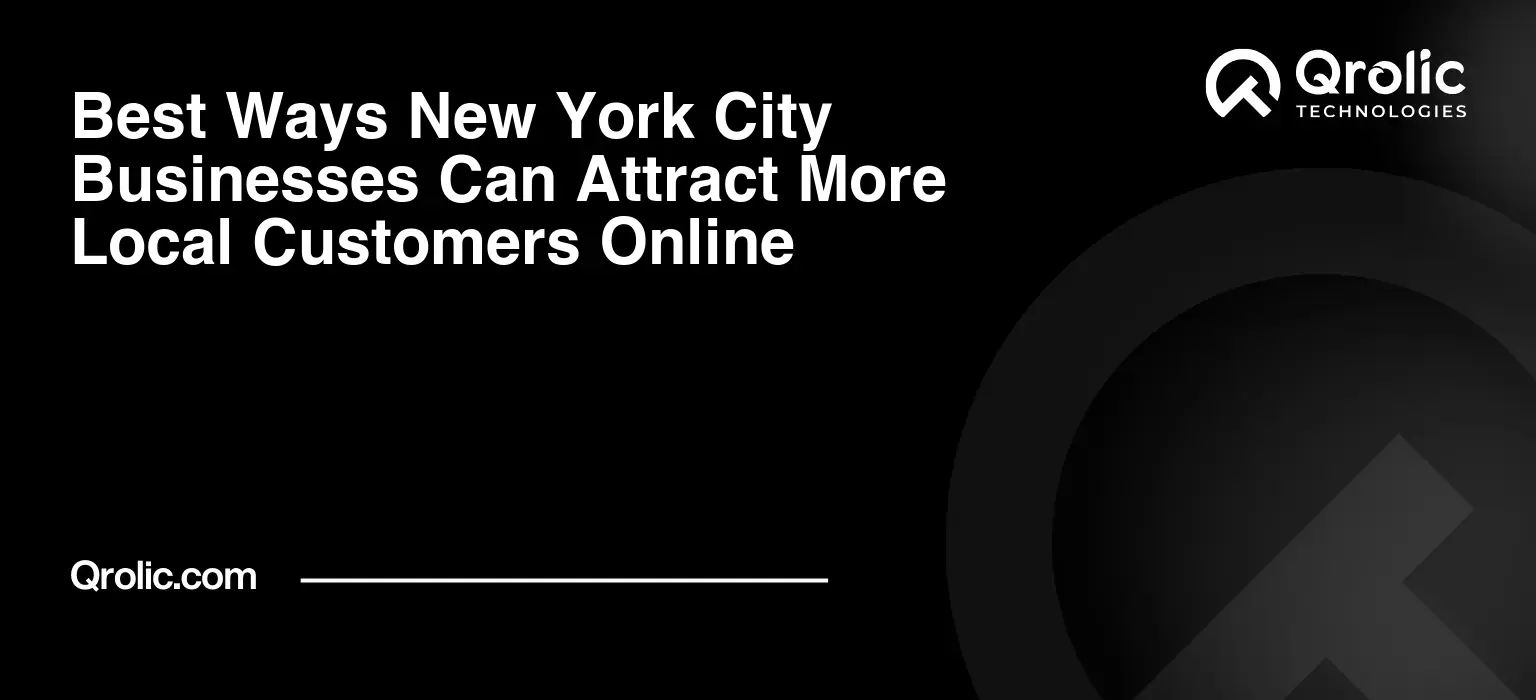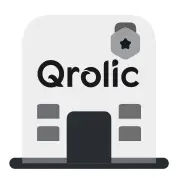Navigating the bustling digital avenues of New York City to capture the attention of its discerning local residents is an art and a science. For businesses of all sizes, from the iconic deli in the Lower East Side to the boutique fashion store in SoHo, understanding how to effectively attract customers online isn’t just an advantage—it’s an absolute necessity. The goal is clear: to transform the millions of potential customers searching on their devices into loyal patrons walking through your doors or clicking “add to cart.”
Quick Summary:
- Optimize Google My Business for local visibility.
- Engage customers using localized social media strategies.
- Build loyalty through reviews and targeted email marketing.
- Ensure your website is mobile-friendly and fast.
Table of Contents
- Understanding the NYC Local Customer Landscape Online
- Mastering Local SEO for NYC Dominance
- Engaging the NYC Community Through Social Media
- Cultivating Customer Loyalty & Driving Repeat Business Online
- Leveraging Paid Advertising for Hyperlocal Reach
- Website Optimization for the NYC Local User Experience
- Harnessing the Power of Local Partnerships and Community Engagement Online
- Measuring Success: Analytics for NYC Local Marketing
- Qrolic Technologies: Your Partner in Conquering the NYC Digital Landscape
- The Future of Attracting Local Customers in NYC: Trends to Watch
Understanding the NYC Local Customer Landscape Online
New York City’s local customer base is unlike any other. They are fast-paced, incredibly diverse, tech-savvy, and often fiercely loyal to the hidden gems and unique experiences that make their neighborhood special. Attracting them online requires more than just a generic digital marketing plan; it demands a hyper-localized, culturally sensitive, and highly efficient approach.
What Makes NYC Customers Unique? New Yorkers are always on the move, making decisions quickly based on convenience, quality, and often, a strong sense of community. They value authenticity and efficiency. When they search for “best coffee shop in DUMBO” or “reliable dry cleaner near Grand Central,” they expect immediate, relevant results. Their decision-making process is often mobile-first, influenced heavily by reviews, social media buzz, and proximity.
Why Online Presence is Non-Negotiable in NYC In a city where millions of potential customers are always connected, a robust online presence isn’t just about visibility; it’s about accessibility and trust. Foot traffic alone, once the lifeblood of many NYC establishments, is no longer sufficient. People discover new places through their phones, plan their routes using digital maps, and validate choices by reading online reviews. Without a strong online footprint, your business, no matter how amazing, risks becoming invisible in the city that never sleeps. The digital realm has become the primary discoverability engine, shifting the traditional customer journey from accidental discovery to intentional online search.
The Shift from Foot Traffic to Digital Discovery Consider the New Yorker looking for a new brunch spot in the West Village. They’re no longer just wandering; they’re likely searching “brunch West Village,” scrolling through Instagram for visually appealing dishes tagged with the location, or checking Yelp for top-rated spots. This fundamental shift means your digital storefront, be it your Google My Business profile or your social media feed, is often the very first interaction a potential customer has with your brand. It’s your opportunity to make a compelling first impression, showcase your unique NYC flair, and guide them directly to your physical or digital doors.
Mastering Local SEO for NYC Dominance
Local Search Engine Optimization (SEO) is the cornerstone of attracting local customers online, especially in a dense urban environment like NYC. It’s about making sure your business appears prominently when New Yorkers search for products or services you offer within their immediate vicinity.
What is Local SEO? Local SEO optimizes your online presence for geographic-specific searches. It’s the difference between ranking for “bakery” (national) and “best cronuts in Chelsea” (local). For NYC businesses, this means targeting specific boroughs, neighborhoods, and even subway lines. It ensures that when someone in Murray Hill types “sushi delivery,” your restaurant is among the top results.
Google My Business (GMB) – Your Digital Storefront on Every Block Google My Business is undeniably the most critical tool for local businesses. It powers your presence on Google Search and Maps, putting your business directly in front of customers looking for local solutions. Think of it as your virtual window display on every digital street corner.
- Claiming and optimizing Your Profile:
- Accuracy is Paramount: Ensure your business name, address, phone number (NAP), and website are identical across all online platforms. Even a slight discrepancy can confuse search engines and deter customers.
- Select Accurate Categories: Be specific! “Pizza Restaurant” is better than “Restaurant.” “Boutique Hotel” is better than “Hotel.” This helps Google understand exactly what you offer.
- Comprehensive Services/Products: List all your offerings. For a salon, list specific services like “balayage,” “men’s haircuts,” “bridal updos.” For a bookstore, list genres, events, and unique merchandise.
- High-Quality Photos and Virtual Tours: Showcase your unique NYC vibe. Are you a cozy bookstore in Greenwich Village? Share inviting photos of your reading nooks. A bustling eatery in Hell’s Kitchen? Pictures of your signature dishes and vibrant atmosphere are key. Even better, a 360-degree virtual tour of your establishment can give potential visitors an immersive preview, making them more likely to visit.
- Google Posts: Announcing Events and Specials:
- Use GMB Posts to share timely updates. Promote your “Broadway pre-show dinner special” in the Theater District, announce a “Flatiron District happy hour,” or highlight a “limited-edition artist print” at your gallery in Bushwick. These posts keep your profile fresh and provide compelling reasons for customers to engage.
- Q&A Section: Proactive Answers:
- Monitor the Q&A section on your GMB profile. Anticipate common questions and answer them proactively (e.g., “Do you take reservations for large groups?”, “Is your store accessible?”, “What are your holiday hours?”). This demonstrates responsiveness and transparency, building trust with potential customers.
- Leveraging Reviews: Responding to Positive and Negative:
- Encourage customers to leave reviews (more on this later). Most importantly, respond to every single review, positive or negative. A “Thanks for visiting our Greenwich Village cafe, we hope to see you again soon!” shows appreciation. A thoughtful response to a negative review (e.g., “We’re truly sorry your experience wasn’t up to par at our Upper West Side location. We’d love to make it right…”) shows you value feedback and are committed to customer satisfaction. This active engagement significantly impacts your local ranking and customer perception.
Local Citations and Directory Listings: Beyond the Yellow Pages Beyond GMB, consistency of your NAP across other online directories is crucial. Think of them as modern-day phone books that validate your business’s existence and information to search engines.
- Key NYC-Specific Directories:
- Yelp: Indispensable for restaurants, services, and retail. Many New Yorkers check Yelp before trying a new place.
- Tripadvisor: Crucial for hospitality, tours, and attractions, especially for those in tourist-heavy areas like Times Square or near Central Park.
- Foursquare/Swarm: Still relevant for check-ins and recommendations, particularly for bars, restaurants, and entertainment venues.
- Local Chambers of Commerce: Joining local chambers (e.g., Manhattan Chamber of Commerce, Brooklyn Chamber of Commerce) often includes a directory listing.
- Industry-Specific Directories: Are you a law firm? Look for legal directories. A medical practice? Health directories.
- Consistency is King (NAP Consistency): Ensure your business Name, Address, and Phone number are exactly the same across every listing. Inconsistent information can confuse search engines, hurting your local ranking. Think of it like shouting your address from the rooftops – you want everyone to hear the same thing!
On-Page SEO for Local Search: More Than Just Keywords Your website itself needs to be optimized for local searches. This goes beyond just having your address on a contact page.
- Location-Specific Keywords:
- Integrate highly specific keywords naturally into your website content. Instead of just “pizza,” use “best pizza slices Upper East Side.” Instead of “hair salon,” use “eco-friendly hair salon Brooklyn Heights.” If you serve specific neighborhoods, create dedicated pages for them (e.g., “Our Services in Williamsburg,” “Event Venues in Financial District”).
- optimizing Service Pages:
- If you offer multiple services, create a unique page for each, incorporating local keywords. For a photography studio, this could be “Wedding Photography DUMBO,” “Family Portraits Prospect Park,” and “Headshots Midtown Manhattan.”
- Creating Local Content:
- Your blog is a powerful tool for local SEO. Write about topics relevant to New Yorkers. Examples: “Hidden Gems of Chelsea: Our Favorite Spots,” “A Local’s Guide to Exploring Little Italy,” “Top 5 Dog Parks in Astoria.” This not only helps with SEO but also positions your business as a community expert.
Building Local Backlinks: The Digital Word-of-Mouth Backlinks from other reputable, local websites signal to search engines that your business is a trusted part of the community.
- Partnerships with Local Businesses:
- Collaborate on promotions or events with complementary local businesses (e.g., a bookstore partnering with a coffee shop, a Yoga Studio with a health food store). Link to each other’s websites.
- Sponsoring Local Events:
- Sponsor a local block party in the East Village, a street fair in Harlem, or a charity run in Staten Island. Event organizers often list sponsors on their websites, providing valuable local backlinks.
- Local Press Mentions:
- Pitch stories to local news outlets (e.g., “The Villager,” “Brooklyn Paper,” “DNAinfo NYC”) about your unique business, community involvement, or special events. Press mentions often come with highly authoritative backlinks.
Engaging the NYC Community Through Social Media
Social media is where the vibrant pulse of New York City truly comes alive. It’s a visual, community-driven space where businesses can connect with their audience on a personal level, reflecting the city’s diverse energy.
Why Social Media is Crucial for NYC Businesses New Yorkers are highly active on social media, using it for everything from discovering new restaurants to finding local events. It’s an unparalleled platform for visual storytelling, fostering community, and showcasing the unique personality of your brand within the NYC context.
Choosing the Right Platforms: Not all platforms are right for every business. Focus your efforts where your target NYC customers spend their time.
- Instagram:
- Visual Storytelling: Perfect for showcasing food, fashion, art, unique experiences, and the aesthetic of your physical space. Think beautiful latte art from a Tribeca cafe, a new collection from a Nolita boutique, or street photography from a SoHo gallery.
- Hashtags: Use a mix of broad (e.g., #NYCfood, #Manhattan) and specific (e.g., #uesrestaurants, #bushwickart, #nycsmallbusiness) hashtags.
- Location Tagging: Always tag your exact location, and encourage customers to do the same.
- Facebook:
- Community Groups & Events: Many NYC neighborhoods have active Facebook groups (e.g., “Park Slope Parents,” “Upper East Side Moms,” “Long Island City Community”). Participate authentically, offering value and building relationships, not just promoting. Create and promote local events (e.g., a book signing, a tasting menu night).
- Targeted Ads: Facebook’s robust targeting allows for hyper-local ad campaigns.
- TikTok:
- Short-Form Video: Ideal for quick, engaging content that showcases your NYC vibe. Think behind-the-scenes of your bakery making bagels in Queens, a quick tour of your vintage shop in the Lower East Side, or trending audio clips adapted to your specific NYC business.
- Authenticity: TikTok thrives on authenticity, making it great for showing the “real” NYC experience of your business.
- LinkedIn:
- B2B Networking: If your business serves other businesses in NYC, LinkedIn is essential for networking, sharing industry insights, and establishing partnerships with other local companies.
Content Strategies That Resonate Locally: Your social media content should feel inherently “New York.”
- Showcasing Local Landmarks:
- Integrate iconic (or even lesser-known) NYC landmarks into your visuals or narratives. A new fashion line shot against the backdrop of the Brooklyn Bridge, or a cafe’s outdoor seating with a view of the Empire State Building.
- User-Generated Content (UGC):
- Encourage customers to tag your business and repost their content (with permission). “Tag us at our Times Square spot!” or “Share your favorite moment at our Central Park West boutique!” UGC is authentic and highly influential.
- Behind-the-Scenes NYC Life:
- Share glimpses of what makes your business uniquely New York. The rush of a busy morning at your Midtown deli, the intricate craftsmanship in your artisan workshop in the Garment District, or the unique personalities of your staff.
- Running Localized Contests/Giveaways:
- “Win a dinner for two at our favorite restaurant in the Financial District!” or “Guess which NYC landmark this is for a discount!” These generate engagement and reinforce your local connection.
Hyperlocal Social Media Advertising: Social media platforms offer powerful targeting capabilities.
- Geo-targeting Ads:
- Target ads to specific boroughs, neighborhoods, or even within a certain radius of your physical location (e.g., “target users within 2 miles of 10003 ZIP code”).
- Audience Segmentation by NYC Interests:
- Target users based on their interests that align with local NYC culture (e.g., “NYC foodies,” “Broadway enthusiasts,” “Brooklyn artists,” “NYC marathon runners”).
Cultivating Customer Loyalty & Driving Repeat Business Online
Attracting new customers is only half the battle. Retaining them and transforming them into loyal advocates is crucial for long-term success in the competitive NYC market. Online tools play a significant role here.
The Power of Online Reviews & Reputation Management In a city where word-of-mouth spreads fast, online reviews are the digital equivalent. They are pivotal for building trust and influencing purchasing decisions.
- Encouraging Reviews:
- Direct Asks: Politely ask satisfied customers to leave a review.
- QR Codes: Place QR codes at your checkout or on receipts that link directly to your GMB or Yelp review page.
- Email Follow-ups: After a purchase or service, send a follow-up email requesting a review.
- Small Incentives (where permissible): A small discount on a future purchase or entry into a drawing for a gift card (check platform guidelines for compliance).
- Responding Strategically to All Reviews:
- Positive Reviews: A simple, specific “Thank you! We loved serving you at our East Village location and appreciate your kind words about our staff” goes a long way.
- Negative Reviews: Address concerns calmly and professionally. Empathize, apologize if appropriate, offer a solution, and invite them to connect offline to resolve the issue (e.g., “We’re truly sorry you had a less-than-ideal experience at our Upper West Side branch. Please contact us directly at [phone number/email] so we can address your concerns personally and work to make it right.”). A well-handled negative review can turn a critic into a fan.
- Turning Negative into Positive:
- Publicly addressing and resolving issues shows future customers your commitment to service excellence, transforming potential damage into a demonstration of integrity.
Email Marketing: Building Direct Relationships Email remains one of the most effective and cost-efficient ways to communicate directly with your customers.
- Segmenting Lists by Location/Interest:
- If you have multiple NYC locations, segment your email list so customers receive offers relevant to their preferred neighborhood (e.g., “Specials for our Midtown East regulars” vs. “Exclusive offers for our customers in Brooklyn”).
- Personalized Offers:
- Use customer data to send highly relevant offers (e.g., a discount on a product they previously purchased, a reminder about a service they typically use, a “happy birthday” discount for their favorite cheesecake from your Little Italy bakery).
- Newsletters with Local Updates:
- Send out newsletters that aren’t just promotional but offer value. Include local news, upcoming neighborhood events (e.g., “Holiday markets in Union Square,” “Summer concerts in Prospect Park”), behind-the-scenes glimpses of your NYC business, or spotlights on local artists or initiatives you support.
Loyalty Programs and Exclusive NYC Offers: Reward your most loyal New York customers.
- Digital Loyalty Cards:
- Utilize apps like Loyalzoo or Perkville, or even a simple punch card system managed via email/QR codes.
- Birthday Discounts, Member-Only Events:
- Make customers feel special. Offer a discount on their birthday, early access to sales, or exclusive invitations to events (e.g., a private tasting at your Flatiron restaurant, a preview of a new art exhibition in Chelsea).
- Partnering with Other Local Businesses for Cross-Promotions:
- “Show your receipt from [Your Business Name] to get 10% off at [Partner Business Name] in Astoria!” This expands your reach and offers added value to customers.
Leveraging Paid Advertising for Hyperlocal Reach
While organic strategies build long-term presence, paid advertising offers immediate, precise reach to your target audience in NYC.
Google Ads (Search & Display): Targeting NYC Searchers Google Ads allows you to appear at the top of search results for specific keywords, reaching customers actively looking for your products or services.
- Location Targeting:
- Crucially, set your campaigns to target specific NYC ZIP codes, neighborhoods, boroughs, or even a precise radius around your business address (e.g., “target users within 1 mile of Herald Square”).
- Ad Copy with NYC-Specific Language:
- Craft ad copy that speaks directly to New Yorkers. Use phrases like “Your Local Brooklyn Heights Bistro,” “Fast Delivery in Manhattan,” or “NYC’s Top-Rated [Service].” Highlight proximity and local benefits.
- Call-Only Ads for Immediate Bookings:
- For service-based businesses (e.g., locksmith, plumber, emergency dentist), call-only ads on mobile devices allow customers to call you directly with one tap, perfect for urgent needs in a bustling city.
Social Media Ads: Precision Targeting NYC Demographics Platforms like Facebook, Instagram, and TikTok offer incredibly granular targeting options.
- Facebook/Instagram Geo-targeting:
- Beyond location, target users based on their demographics (age, income), interests (e.g., “NYC foodies,” “Broadway fans,” “local art collectors”), and behaviors. This ensures your ad budget reaches the most relevant New Yorkers.
- Interest-Based Targeting:
- If you’re a vintage clothing store, target users interested in “sustainable fashion NYC” or “thrift stores Brooklyn.” If you’re a pet supply store, target “NYC dog owners” or “cat lovers Manhattan.”
Geo-fencing and Proximity Marketing: This advanced technique allows you to target mobile users when they enter a specific geographic area (your “fence”).
- Reaching Customers When They Are Near Your Physical Location:
- Imagine a retail store in SoHo sending a push notification or an ad to someone who has just walked past their storefront. Or a coffee shop near Union Square targeting office workers during their lunch break.
- Practical Applications in Busy Areas:
- Geo-fencing can be highly effective in high-traffic areas like Times Square, Grand Central Terminal, or major shopping districts. You can serve ads to tourists and locals alike who are already in the vicinity and likely looking for services or experiences.
Website Optimization for the NYC Local User Experience
Your website is your central online hub. For NYC businesses, it needs to be fast, mobile-friendly, and provide all the information a New Yorker needs quickly and easily.
Mobile-First Design: Essential for On-the-Go New Yorkers Given that most New Yorkers are constantly moving and rely heavily on their smartphones, your website must be designed with mobile users in mind.
- Fast Loading Times:
- New Yorkers have little patience for slow websites. Optimize images, code, and hosting to ensure your site loads almost instantly on mobile devices.
- Easy Navigation on Mobile:
- A clean, intuitive mobile menu, large tap targets, and scrollable content are crucial. Customers should be able to find your hours, address, and contact info within seconds.
Clear Contact Information and Directions: Make it incredibly easy for customers to find and reach you.
- Prominent Display of Address, Phone, Hours:
- Display your NAP clearly in the header, footer, and on a dedicated contact page. Use schema markup to help search engines understand this information.
- Embedded Google Maps:
- Embed an interactive Google Map on your contact page, allowing users to get instant directions from their current location to your business in Midtown or Queens.
- Public Transport Directions:
- For a city like NYC, including specific subway lines and bus routes that serve your location (e.g., “Accessible via N, R, Q, W trains at 57th Street-7th Ave station”) is a massive convenience for locals.
Local Content Strategy on Your Website: Beyond your blog, integrate local flavor throughout your site.
- “Our Story in NYC” Page:
- Share your business’s connection to the city. Did your family open the first Italian bakery in the Bronx generations ago? Are you a modern tech startup founded in a Brooklyn loft? Share that narrative.
- Blog Posts About Local Events, Neighborhood History, Collaborations:
- Maintain a blog with articles that appeal to local interests. “The History of Our Building in SoHo,” “Guide to the Best Street Art in Bushwick,” “Supporting Local Artists in Harlem: Our Partnership.”
- Highlighting Staff Who Are NYC Residents:
- Introduce your team members and their connection to NYC. This humanizes your business and reinforces your local ties.
Harnessing the Power of Local Partnerships and Community Engagement Online
Authentic community engagement builds trust and expands your reach organically within the highly interconnected fabric of NYC.
Collaborating with Fellow NYC Businesses: Strength in numbers, especially in a city of millions.
- Joint Promotions, Cross-Marketing Campaigns:
- A wine shop in Chelsea partnering with a cheese shop for a tasting event. A fitness studio offering a discount to members of a nearby juice bar. These create synergistic relationships that benefit both businesses.
- Creating “NYC Local Business Bundles”:
- Offer themed bundles that include products or services from several local businesses (e.g., a “Brooklyn Artisan Box” featuring goods from local craftspeople).
Engaging with Local Influencers and Micro-Influencers: New Yorkers often trust recommendations from people they perceive as authentic and local.
- Identifying Relevant Influencers:
- Look for food bloggers, fashionistas, artists, local parents, or community organizers whose audience aligns with your target market. A micro-influencer with 5,000 highly engaged local followers can be more effective than a macro-influencer with a million global ones.
- Authentic Endorsements:
- Offer them free products/services in exchange for genuine reviews and social media posts. The key is authenticity; forced endorsements are easily spotted.
Participating in Online Community Groups and Forums: Be a helpful, engaged member of the digital community.
- Facebook Groups for Specific Neighborhoods:
- Join and contribute to groups like “Upper West Side Moms,” “Bushwick Artists Collective,” or “Queens Foodies.” Offer advice, answer questions, and occasionally, when appropriate, subtly mention your business.
- Nextdoor App:
- Nextdoor is specifically designed for neighborhood connections. Claim your business page and participate in local discussions, offering services, or sharing community updates.
- Providing Value, Not Just Sales Pitches:
- The goal is to build relationships. Offer expert tips related to your industry, share helpful resources, or participate in local discussions. Overt self-promotion will quickly get you muted or removed.
Measuring Success: Analytics for NYC Local Marketing
To ensure your efforts are paying off and to continually refine your strategy, rigorous tracking and analysis are essential.
Key Metrics to Track: These metrics will tell you if your online efforts are leading to real-world business in NYC.
- GMB Insights:
- Calls: How many people called you directly from your GMB profile?
- Direction Requests: How many requested directions to your physical location?
- Website Clicks: How many clicked through to your website?
- Photo Views: How popular are your profile photos?
- Search Queries: What terms did people use to find you? This is invaluable for refining keywords.
- Website Traffic from Local Searches:
- In Google Analytics, monitor traffic from local search terms and geographical locations within NYC. See which neighborhoods are sending you the most visitors.
- Social Media Engagement with Local Content:
- Track likes, comments, shares, and saves on posts featuring NYC-specific content. Are your NYC-targeted ads reaching the right people and converting?
- Conversion Rates from Local Campaigns:
- Are the customers arriving from your local SEO or geo-targeted ads actually making a purchase, booking an appointment, or signing up for your newsletter?
Tools for Analysis: Leverage these tools to gather and interpret your data.
- Google Analytics:
- Monitor website traffic, user behavior, conversions, and demographic data. Filter by NYC locations to understand your local audience.
- Google My Business Insights:
- Provides direct performance data for your GMB listing.
- Social Media Platform Analytics:
- Facebook Insights, Instagram Insights, TikTok Analytics, etc., offer detailed data on your audience, reach, and engagement.
- CRM (Customer Relationship Management) for Customer Data:
- If applicable, track how customers discovered you (online, referral, social media) to attribute success to specific channels.
Qrolic Technologies: Your Partner in Conquering the NYC Digital Landscape
Navigating the complex and ever-evolving digital landscape of New York City can be daunting, even for the most experienced business owners. This is where expert guidance becomes invaluable. Qrolic Technologies is a leading digital solutions provider uniquely positioned to help New York City businesses not just survive, but thrive online.
At Qrolic Technologies (https://qrolic.com/), we understand the unique pulse of NYC – from the fast-paced demands of Midtown to the artistic spirit of Brooklyn and the tight-knit communities of Queens. Our team brings together years of collective experience in digital marketing, equipped with the knowledge and tools to tailor strategies that resonate specifically with the New York customer base.
How Qrolic Can Help NYC Businesses:
- Local SEO Strategy and Implementation: We don’t just optimize; we immerse ourselves in your neighborhood’s digital ecosystem. From meticulous Google My Business optimization, ensuring your listing pops for “bagels near me in Lower East Side,” to building robust local citation profiles and developing highly targeted on-page content, we ensure your business ranks where it matters most to New Yorkers.
- Website Development (Mobile-First, Location-Optimized): Recognizing that New Yorkers are constantly on the go, we design and develop lightning-fast, mobile-responsive websites. Our sites are not only visually appealing but also strategically optimized with clear NAP information, embedded maps, and even public transport directions, ensuring a seamless experience for your local clientele.
- Social Media Marketing Tailored for NYC: We craft engaging social media strategies that capture the city’s unique essence. Whether it’s visual storytelling on Instagram highlighting your SoHo boutique’s unique interior or creating viral TikTok content that showcases your Brooklyn eatery’s vibrant atmosphere, we connect your brand with the right local audiences.
- Paid Advertising Campaigns with Hyperlocal Targeting: Our experts manage Google Ads and social media advertising campaigns with razor-sharp precision, utilizing geo-fencing and interest-based targeting to reach potential customers exactly when and where they’re looking for your services within NYC – be it office workers in Midtown or families in Staten Island.
- Reputation Management: We actively monitor and manage your online reviews across all platforms (Yelp, Google, Tripadvisor), guiding you in crafting authentic responses that build trust and elevate your brand’s standing within the NYC community.
- Data Analytics and Reporting: Beyond just implementing strategies, Qrolic provides transparent, easy-to-understand reports on your campaign performance. We track key metrics, identify what’s working (and what’s not), and continually refine your approach to ensure maximum ROI for your NYC marketing spend.
Our expertise lies in understanding the nuances of local market dynamics – knowing that a marketing approach for the Bronx might differ vastly from one for the Upper East Side. We partner with you to transform your digital presence into a powerful magnet for local New York customers, turning online searches into real-world foot traffic and loyal patronage.
The Future of Attracting Local Customers in NYC: Trends to Watch
The digital landscape is constantly evolving, and staying ahead of the curve is crucial. For NYC businesses, several emerging trends will shape how local customers are attracted online.
- Voice Search Optimization:
- As smart speakers and virtual assistants become ubiquitous, optimizing for voice search (e.g., “Siri, find the best bagel shop near me in Lower Manhattan” or “Hey Google, where can I get a last-minute theater ticket in the Theater District?”) will be vital. This means focusing on natural language, long-tail keywords, and ensuring your GMB profile is meticulously updated.
- Augmented Reality (AR) for Local Experiences:
- Imagine a retail store letting customers virtually “try on” clothes via their phone’s camera, or a restaurant allowing patrons to see a 3D rendering of a dish before ordering. AR can provide immersive, interactive experiences that bridge the digital and physical worlds, particularly appealing in an innovative city like NYC.
- Personalized Hyperlocal Content:
- Leveraging AI and data, businesses will deliver even more personalized content based on a user’s exact location, preferences, and past interactions. This could mean real-time push notifications about a flash sale at a nearby boutique or a personalized coffee recommendation based on previous orders at your favorite café.
- Sustainability and Ethical Sourcing:
- New York consumers are increasingly conscious of a business’s ethical practices. Highlighting your sustainable sourcing, eco-friendly operations, or community support initiatives online will resonate deeply and attract a growing segment of local customers.
- Live Streaming and Virtual Experiences:
- The pandemic accelerated the adoption of live streaming. NYC businesses can continue to leverage this by offering virtual tours of a unique gallery in Tribeca, live cooking classes from a renowned Flatiron restaurant, or Q&A sessions with local experts. This extends your reach beyond physical boundaries and engages customers in new ways.
Attracting local customers online in New York City is a continuous journey, not a destination. It requires a strategic, adaptable, and deeply localized approach. By embracing these digital strategies, investing in optimized online presences, and leveraging the power of community, NYC businesses can ensure they not only survive but truly flourish in the city’s competitive, yet incredibly rewarding, market.









